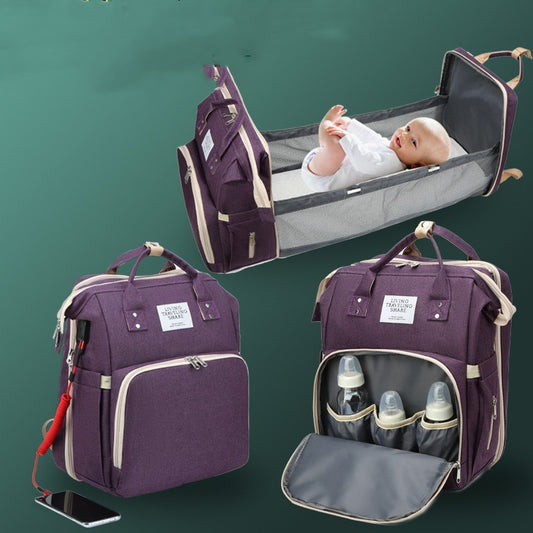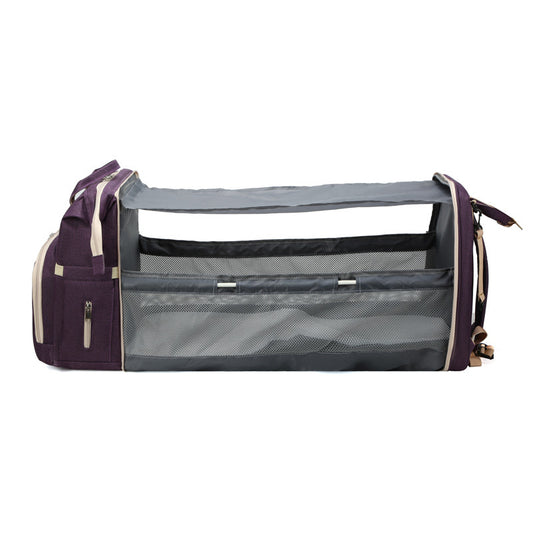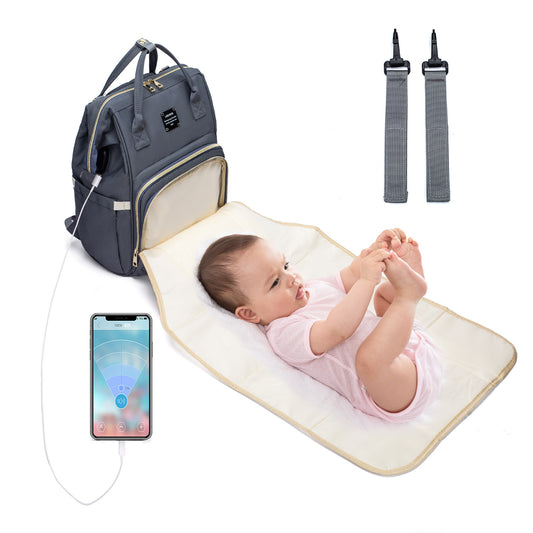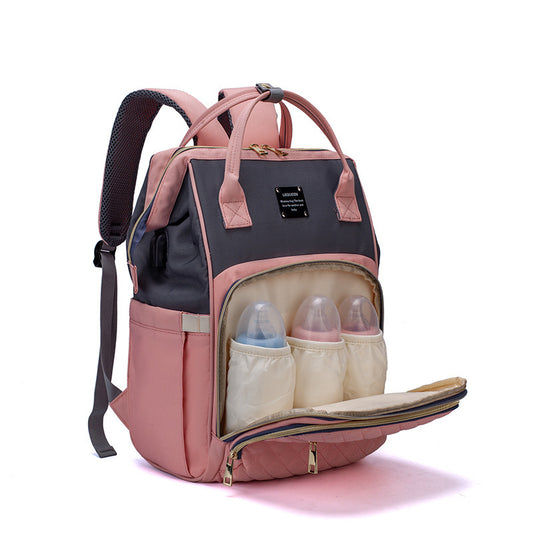Travelling with a baby can be unpredictable. The last thing you want is to dig through a disorganised bag during a mid-air nappy emergency or find your bottle smashed in the bottom of a packed tote.
That’s where a travel-ready baby changing bag comes in — engineered for on-the-move parenting, smart organisation, and quick access.
In this guide, you’ll learn exactly what to look for in a baby changing bag for travel — whether you're planning a weekend getaway, daily commute, or an international flight.
Why a Travel-Specific Baby Changing Bag Matters
A standard baby changing bag may work fine for short errands or walks in the park. But travel demands more:
-
Better compartmentalisation
-
Durable materials
-
External access to wipes, bottles, and mats
-
Secure sections for travel documents or parent valuables
-
Compact design suitable as carry-on luggage
When packing for a train ride, road trip, or flight with a baby, efficiency equals peace of mind.
Key Features to Look for in a Baby Changing Bag for Travel
1. Backpack Style or Convertible Format
Backpacks are superior for hands-free comfort while on the move. Look for padded straps, good weight distribution, and pram clips for flexibility.
Convertible bags (shoulder to backpack) are also helpful when switching between carrying methods during travel.
Tip: Avoid tote-only styles for flights — they slip off and fatigue one side of the body.
2. Structured Compartment Layout (8–12 sections)
Organisation is critical when travelling. Your bag should include:
-
2 large central sections
-
3 or more elasticised pockets for nappies/snacks
-
1 waterproof pocket (for soiled clothes)
-
2 insulated bottle holders
-
1 secure section for phone, cards, passport
Avoid unstructured bags where you’re digging endlessly for a bib or nappy. Structure saves time and stress.
3. Insulated Bottle Holders
Temperature control is essential when you're away for long hours—especially during flights or long-distance car rides.
Thermal bottle sleeves built into the bag keep milk warm or cold without needing an external carrier.
4. Waterproof or Wipeable Exterior and Interior
Travel bags are prone to more wear and tear. Choose a bag with:
-
Durable water-resistant outer fabric
-
Wipe-clean interior lining
-
Reinforced base to prevent sag when placed under seats or on airport floors
If your formula container spills or a bottle leaks mid-flight, a wipeable liner is mandatory.
5. Built-in or Detachable Changing Mat
Travel often means changing in unexpected places — car boots, plane toilets, service stations.
Look for bags with:
-
Fold-out padded mat
-
Lightweight design
-
Wipeable or washable surface
This built-in feature is essential for travel convenience.
6. Compact Carry-On Compliant Size
If flying, your changing bag must meet airline carry-on requirements. Typically, travel changing bags should:
-
Fit under the seat in front
-
Sit comfortably on your back for security
-
Be lightweight even when full
Avoid oversized bulk or hard-sided designs; compressible soft-structure bags are best.
7. External Easy-Access Pockets
The last thing you want on a crowded plane is to open the full bag for wipes or a dummy.
Check for:
-
Side wipe dispenser
-
Zipped front soother pocket
-
External bottle pocket
-
Back-facing phone or document pocket (anti-theft)
This layout keeps you efficient in tight spaces and public settings.
8. Durable Hardware (Zips, Clips, Stitching)
Cheap materials fail faster during transit. Unexpected issues like zip breaks or strap fraying can ruin your travel plan.
Preferred materials in 2025 for travel bags:
-
Reinforced zips with soft pulls
-
Thick polyester or Oxford fabric
-
Metal D-rings and stroller clips
Avoid bags that feel too soft or unstructured when empty.
Travel Scenario Checklist: What to Prioritise Based on Journey Type
|
Type of Travel |
Must-Have Feature |
Recommended Layout |
|
Flight |
Compact, bottle access, passport pocket |
Backpack w/ front access |
|
City day trip |
Quick wipes access, comfort straps |
Sling or convertible bag |
|
Car travel |
Wide opening, thermal section, wet pouch |
Boxy structure, internal pouches |
|
Train/Tube |
Antibacterial section, fast zip pockets |
Backpack, wipe-clean outer |
Bag Styles That Work Best for Travel
Backpack Changing Bags
-
Balanced load
-
Ideal for airports and long walks
-
Typically 10+ compartments
Duffel Hybrid Changing Bags
-
More capacity
-
May convert from hand-held to shoulder
Foldable Changing Stations (Bag + Crib in One)
-
Popular in 2025
-
Great for long-haul travel or camping
-
Built-in sleeping station
Other Travel Considerations
-
Pram strap compatibility: Save shoulder space during airport queues
-
Integrated USB port (optional): Useful for tech-driven parents
-
Hidden anti-theft panel: Very useful in urban travel or abroad
-
Spare detachable pouch: Use for breast pads, medication, or mints
Conclusion
Travelling with a baby demands smart storage, lightweight design, and secure fast access. A high-quality baby changing bag for travel will support your movement, keep essentials organised, and reduce panic when there's little time to unpack.
Look for at least 8–12 organised compartments, waterproofing, thermal bottle holders, and a compact footprint. Whether you're flying abroad or taking the train to grandma’s house, the right travel changing bag becomes your mobile nursery.
Planning a holiday or weekend away?
Explore Travel-Ready Baby Changing Bags – Durable, compact, practical for modern UK families.
FAQs
1. What size baby changing bag is best for travel?
A medium-sized backpack with internal organisation is ideal. It should fit under a plane seat or on a luggage rack without becoming bulky.
2. Can I bring a baby changing bag as carry-on?
Yes. Most changing bags fit within airline carry-on limits. Choose non-rigid styles and avoid overpacking to stay compliant.
3. Should I pack everything in one bag when travelling?
For day trips, yes. But for flights or longer travel, keep bulky items (like blankets) in a separate holdall and essentials in the baby changing bag.
4. Are travel changing bags different from regular ones?
Design differences include more pockets, external access, and tougher materials. A travel bag also tends to have better bottle insulation and built-in wet zones.
5. Do all travel bags come with a changing mat?
Not always. Look for descriptions with "built-in mat" or "includes change pad" — and ensure it's padded and wipeable.





